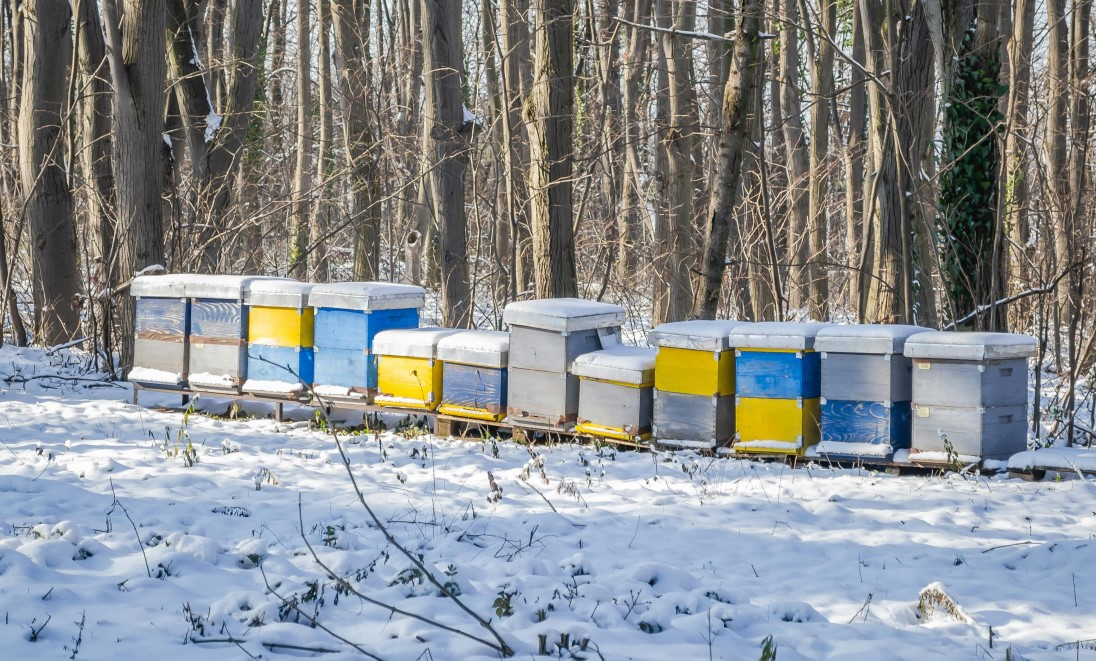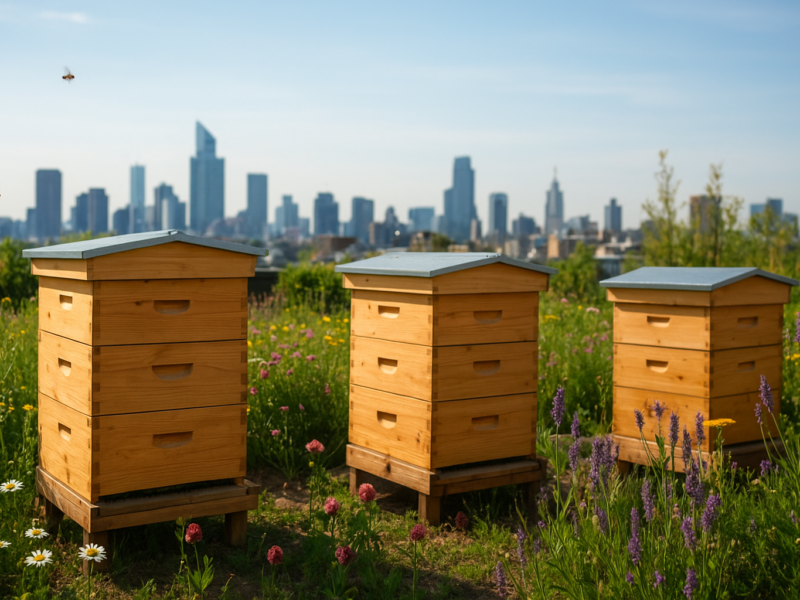Introduction
As temperatures drop and flowers fade, honeybees face one of the most challenging periods of the year — winter. Unlike many insects that hibernate, bees remain active within their hives, clustering together to maintain warmth and protect their precious queen. For beekeepers, proper winter hive care is critical to ensure colony survival and health when spring returns.
In this comprehensive guide, you’ll learn how to prepare your bees for cold weather, what to do before and during winter, common mistakes to avoid, and expert tips for successful overwintering.
2. Preparing the Hive for Cold Weather
Preparation starts in late summer to early autumn. Strong, healthy colonies are the best defense against cold.
🧰 Checklist for Pre-Winter Hive Preparation
- ✅ Ensure a young, productive queen (replace if older than 2 years).
- ✅ Combine weak colonies to form strong ones.
- ✅ Check honey stores — at least 60–90 pounds (27–40 kg) per hive.
- ✅ Treat for Varroa mites and nosema before winter.
- ✅ Remove empty supers to reduce unnecessary space.
- ✅ Tilt the hive slightly forward for moisture drainage.
Pro Tip: Late autumn is the time to reduce entrances to prevent mice and wasps from invading.
3. Insulation and Ventilation
Proper insulation is vital — but so is ventilation. Too much insulation can trap moisture, which kills bees faster than cold.
How to Insulate a Hive:
- Add foam board or straw insulation wraps around the hive.
- Avoid blocking ventilation holes or top entrances.
- Place a moisture quilt box (or absorbent material like wood shavings) on top to reduce condensation.
- Use an inner cover with a top vent to release humid air.
Bees can handle cold, but not wet and cold conditions. Moisture dripping from the top can chill the cluster.

4. Feeding Your Bees During Winter
Food supply is the biggest survival factor. Bees rely on stored honey, but sometimes it’s not enough — especially after a poor nectar season.
Winter Feeding Options:
- Honey Frames: Best natural option.
- Fondant or Sugar Bricks: Place directly above the cluster.
- Candy Boards: Provide both food and moisture absorption.
- Pollen Patties: For early spring stimulation (avoid mid-winter use).
Never feed liquid syrup in freezing temperatures — it can chill bees.
Tip: Always keep emergency feed ready. Starvation is the #1 cause of winter losses.
5. Monitoring and Maintenance
Even during winter, beekeepers should check hives periodically — without opening them fully.
Winter Monitoring Guide:
- Tap the hive gently and listen — a soft buzz means all is well.
- Check for signs of moisture or mold around the entrance.
- Observe dead bees outside — normal unless excessive.
- On warmer days (above 10°C / 50°F), watch for cleansing flights.
6. Common Winter Beekeeping Mistakes
Even experienced beekeepers make errors that can cost entire colonies.
❌ Top Mistakes to Avoid
- Over-insulating without ventilation (causes condensation).
- Neglecting mite treatments in autumn.
- Leaving too many supers on (makes heating harder).
- Not checking honey stores before frost.
- Opening hives too often in freezing temperatures.
7. Tips for Beekeepers in Harsh Climates
For those in regions with long, snowy winters, preparation goes beyond basics.
Extra Measures:
- Build windbreaks using straw bales or fences.
- Wrap hives in black tar paper to absorb sunlight.
- Elevate hives off the ground to prevent snow blockage.
- Group hives together for mutual warmth.
Tip: Avoid placing hives in shaded areas — sunlight encourages activity and reduces moisture buildup.

8. Post-Winter Hive Inspection
When spring nears and temperatures consistently stay above 10°C (50°F), it’s time for the first inspection.
Spring Checkup Steps:
- Open the hive briefly during midday.
- Look for signs of a healthy queen — eggs or larvae.
- Remove moisture quilts and wraps gradually.
- Replace moldy or damaged frames.
- Provide light sugar syrup to stimulate early brood rearing.
If a colony didn’t survive — examine the cause. Common reasons: starvation, disease, moisture, or queen failure.
9. FAQ
Q: Should I leave honey supers on in winter?
No. Remove excess supers; bees can’t heat large empty spaces efficiently.
Q: Can bees survive -20°C temperatures?
Yes — if the hive is dry, insulated, and has enough honey.
Q: Should I wrap my hive completely?
Partial wrapping is best; leave ventilation space at the top and bottom.
Q: How much honey do bees need for winter?
Around 60–90 pounds depending on climate severity.
10. Conclusion
Winter hive care is not just about keeping bees alive — it’s about ensuring a thriving start in spring.
By understanding bee behavior, managing food, balancing insulation and ventilation, and avoiding common mistakes, you give your colonies the best chance to survive the harshest months.
Beekeeping is a partnership with nature. When you respect the bees’ instincts and support their natural resilience, they’ll reward you with strong, productive hives year after year.



